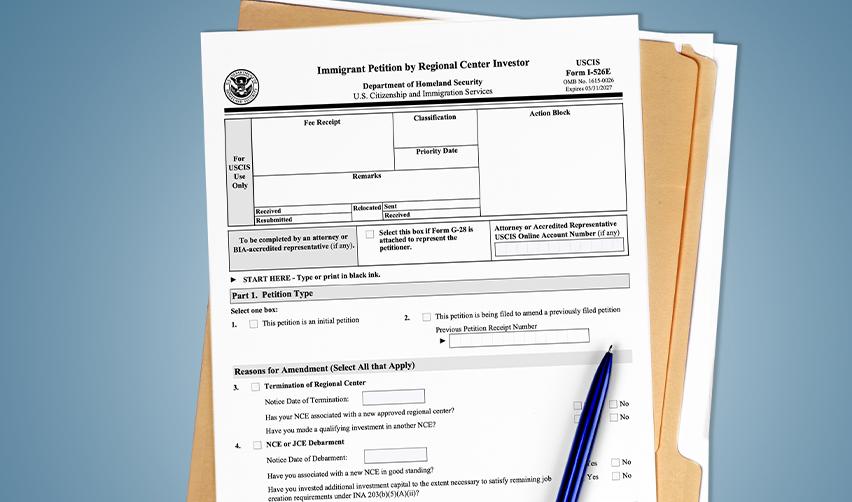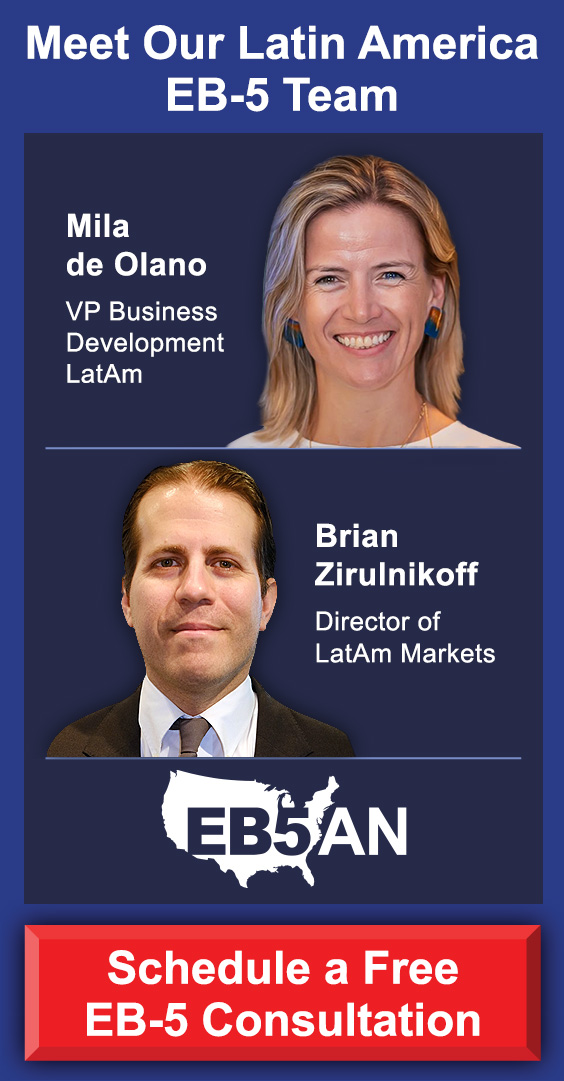If you’ve made the life-changing decision to pursue a U.S. Green Card through the EB-5 Immigrant Investor Program, you’ve already accomplished a significant step by filing your immigrant petition, Form I-526E. Once your I-526E is approved, this opens the door to several crucial steps that can lead to obtaining your Green Card and ultimately U.S. citizenship.
Below, we will break down what happens after your Form I-526E is approved, including visa interviews, the adjustment of status process (if eligible), conditional residency, and the benefit of concurrently filing for multiple petitions.
What Does I-526E Approval Mean?
Concurrent Filing of Forms I-526E, I-485, EAD, and AP
Consular Processing vs. Adjustment of Status
Conditional Residency
Removal of Conditions (Form I-829)
Path to Citizenship
EB5AN Can Guide You Throughout Your EB-5 Process
What Does I-526E Approval Mean?
The I-526E approval is a significant milestone in the EB-5 process. This form, officially known as the “Immigrant Petition by Regional Center Investor,” serves as proof that U.S. Citizenship and Immigration Services (USCIS) has determined your chosen project and source of funds meet the EB-5 program requirements. Once approved, your next steps depend on whether you’re already in the U.S. or residing abroad.
Concurrent Filing of Forms I-526E, I-485, EAD, and AP
One of the key advantages of the EB-5 process is that you may be able to concurrently file several forms at once, making your journey to a Green Card more streamlined. Specifically, if there is no retrogression in the visa bulletin in your category and country, and if you already reside in the U.S., you can file the following forms together:
I-526E: Immigrant Petition by Regional Center Investor.
I-485: Application to Adjust Status to Permanent Resident.
EAD (Employment Authorization Document): Allows you to work in the U.S. while your I-485 is pending.
AP (Advance Parole): Allows you to travel outside the U.S. and return without jeopardizing your I-485 application.
Filing all of these forms simultaneously offers a major advantage because it allows you to obtain employment authorization (EAD) and travel authorization (AP) while waiting for your Green Card. This concurrent filing process is especially beneficial if you want to maintain flexibility in the U.S. with regard to employment and international travel.
Consular Processing vs. Adjustment of Status

If you’re residing outside of the U.S., your next step will be consular processing. This process involves applying for an immigrant visa at the U.S. consulate or embassy in your home country.
A visa interview will be scheduled as part of this process. During this interview, a consular officer will review your documents, including Form DS-260, and ask you questions related to your investment, background, and eligibility for the Green Card.
Once the visa is granted, you will be able to enter the United States as a permanent resident. Upon arrival, your Green Card will be mailed to your U.S. address.
Adjustment of Status
If you are already in the United States on a valid visa (such as an H-1B, L-1, or another non-immigrant visa), you may be eligible to adjust your status to that of a permanent resident without leaving the country. The adjustment of status process is initiated by filing Form I-485, the Application to Register Permanent Residence or Adjust Status, with USCIS.
Once your I-485 is filed, you will undergo a background check, including biometric fingerprinting, and may be asked to attend an interview at a USCIS field office. Once approved, you will be granted conditional permanent residency.
Conditional Residency
Whether you enter the U.S. via consular processing or adjust your status, you will initially be granted conditional permanent residency. This status is valid for two years and is based on your initial EB-5 investment.
The reason for conditional residency is that, under the EB-5 program, the investment must be sustained for at least two years. The U.S. government wants to ensure that your investment continues to meet the program’s requirements, including the creation of jobs for U.S. workers. This two-year period allows USCIS to verify that the investment and job creation criteria are being met before the conditions can be removed.
At the end of this two-year period, you will need to file Form I-829, the Petition by Investor to Remove Conditions on Permanent Resident Status. This petition is your opportunity to prove that you’ve maintained your investment and met all program requirements. If your I-829 is approved, you will be granted full permanent residency without conditions.
Removal of Conditions (Form I-829)
After you’ve held conditional residency for two years, the next major step in your EB-5 journey is to file Form I-829 to remove the conditions on your Green Card. Form I-829 must be filed within the 90-day period immediately before the second anniversary of your conditional residency. This petition will demonstrate that you have met the job creation and investment requirements of the EB-5 program.
Upon approval of your I-829, you will receive your unconditional permanent resident status and a permanent Green Card, which will be valid for ten years.
Path to Citizenship
After you have received your Green Card, the road ahead leads to citizenship, but you must first satisfy certain requirements. As a permanent resident, you must live in the U.S. for at least five years before applying for citizenship, which includes the two initial years of conditional residency. During this period, you will need to demonstrate good moral character, a basic knowledge of U.S. history and government, and the ability to speak, read, and write in English.
Once these requirements are met, you can file Form N-400, the Application for Naturalization. If approved, you will be granted U.S. citizenship.
EB5AN Can Guide You Throughout Your EB-5 Process
Investing through the EB-5 program is a direct path to permanent residency, but it requires attention to detail and a strong understanding of each step. With the right guidance, you can successfully complete your Green Card journey and ultimately become a U.S. citizen.
At EB5AN, transparency is of utmost importance to us. EB5AN has helped more than 2,700 families from 70+ countries become lawful permanent residents of the United States. Our team has more than a decade of experience and offers clients first-rate, low-risk EB-5 regional center projects with a 100% USCIS project approval rate.
If you would like to know more about your EB-5 investment options, book a free call with our expert team today.









